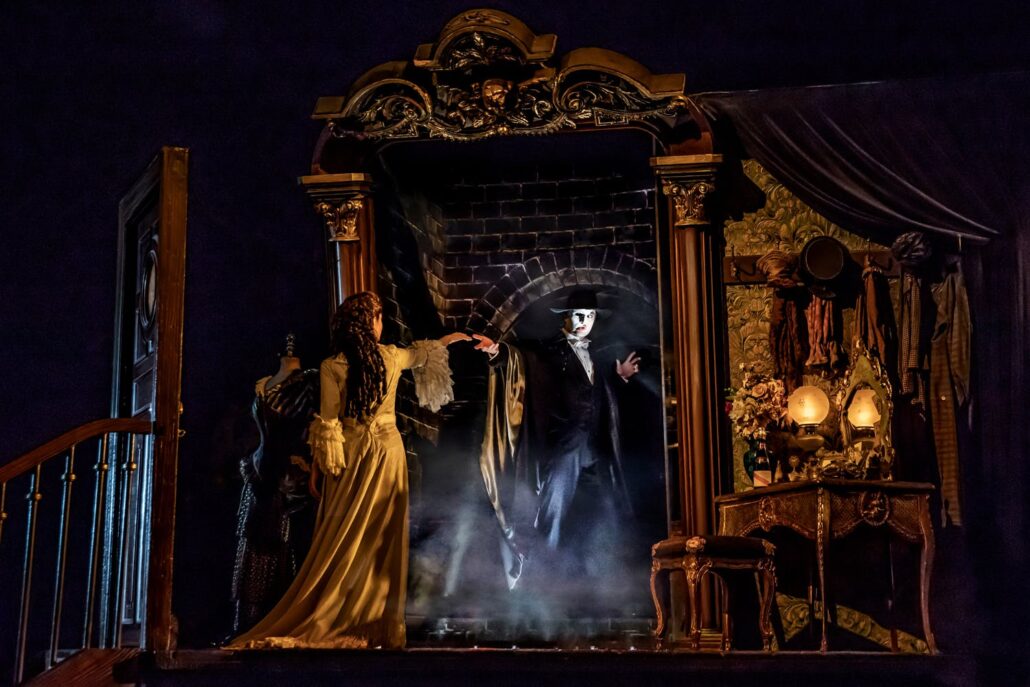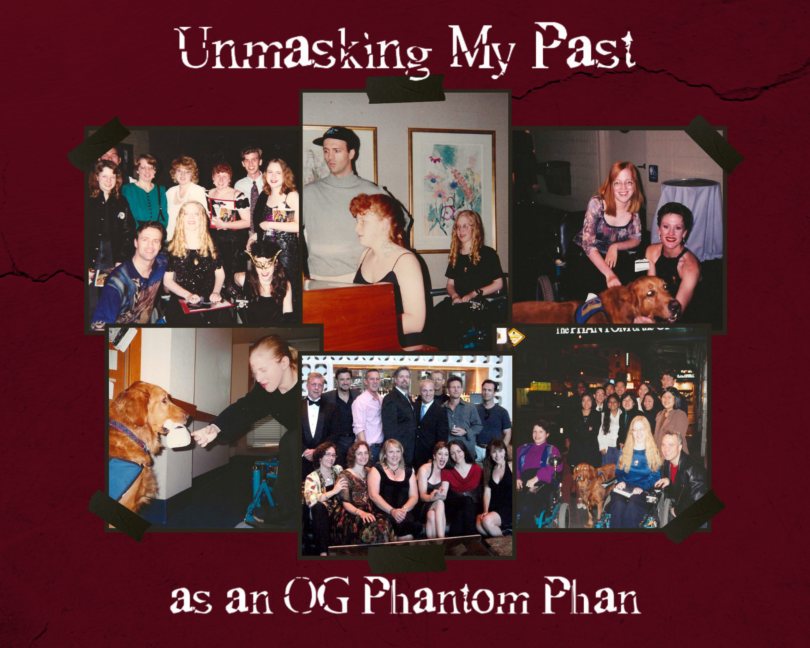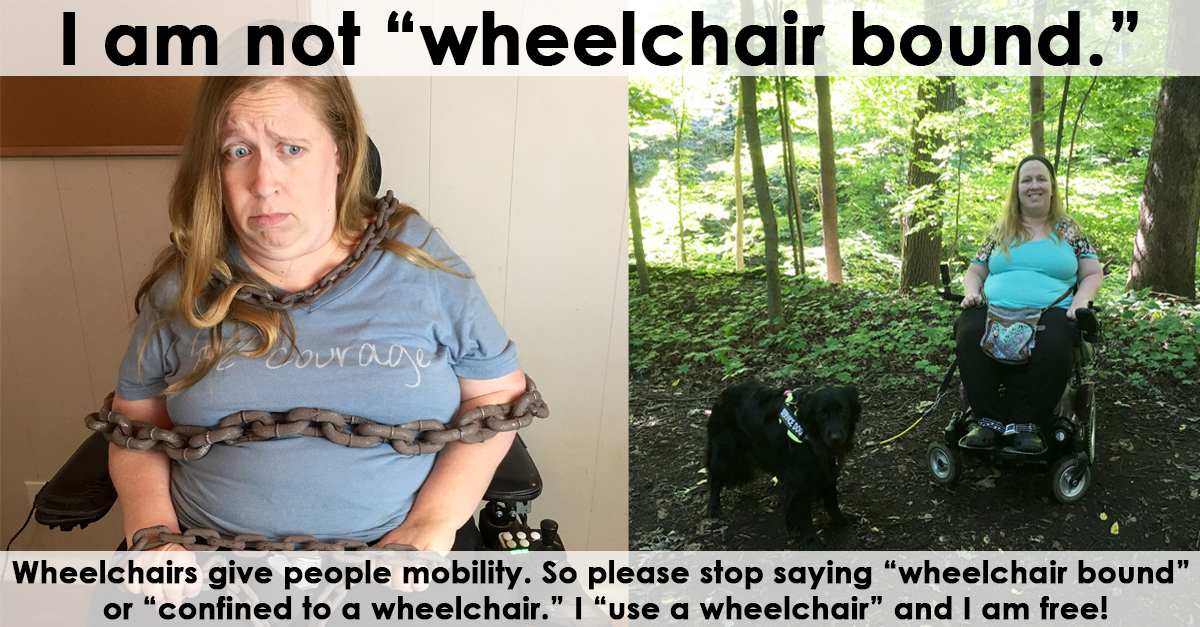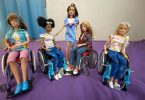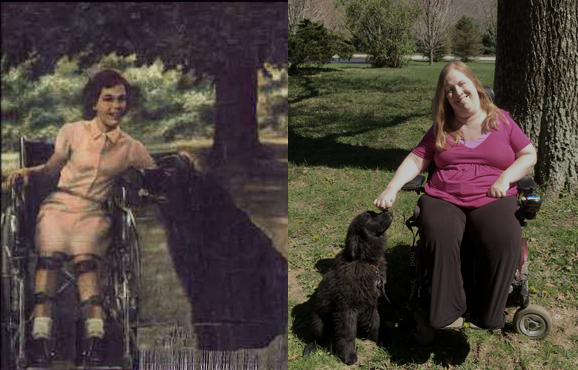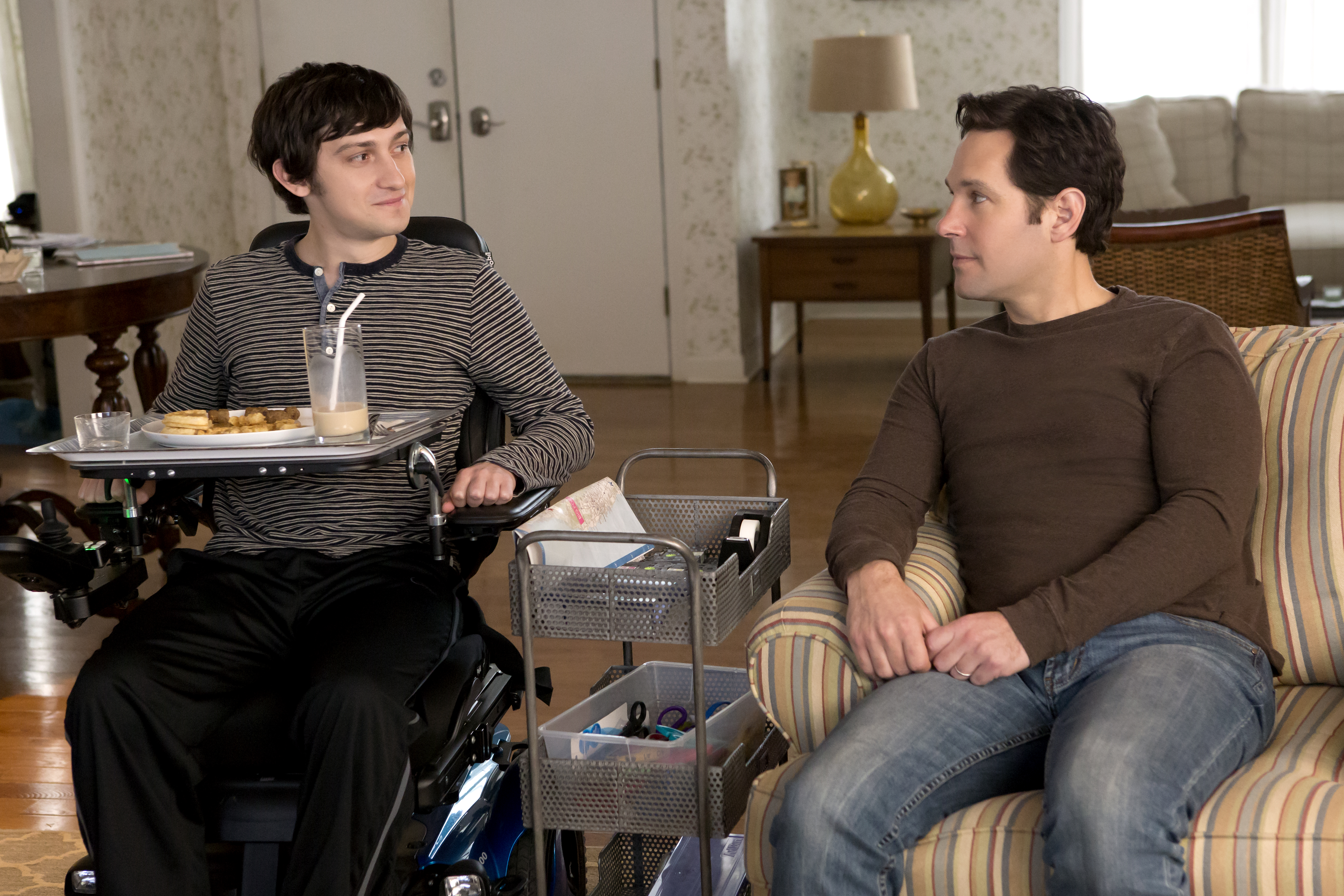I’m Karin, known in some circles as Ayesha, and I’m a writer, editor, travel blogger, website creator, and dog mom. I love New York City and Broadway musicals, just not quite as much as I love having an acre of property in the country where the air is clean and the birds sing every morning. Oh, and I used to be a well-known phan, as they call us, of Andrew Lloyd Webber’s musical The Phantom of the Opera.
It has been a long time since Phantom was a major part of my life, but younger people who are just getting into the show are often curious about the history of the phandom. Cast members who remember us as a bunch of kids and young adults who were always at the show add us on social media and meet us at concerts as middle-aged adults with nostalgic memories of those years. But none of us will be here forever, so as the curtain falls on Phantom after 35 years on Broadway, I want to tell my story, so it is never lost.
I hope by unmasking my past, new generations of musical theatre fans will learn about our community’s history. I hope the performers who brought these characters to life night after night and saw people like me at the stage door again and again will know how much you are appreciated. I hope what I share will help the world understand why this show means so much to so many people. This was my life as an “OG” (Opera Ghost, and pun intended) phan of The Phantom of the Opera from 1992 to 1999.
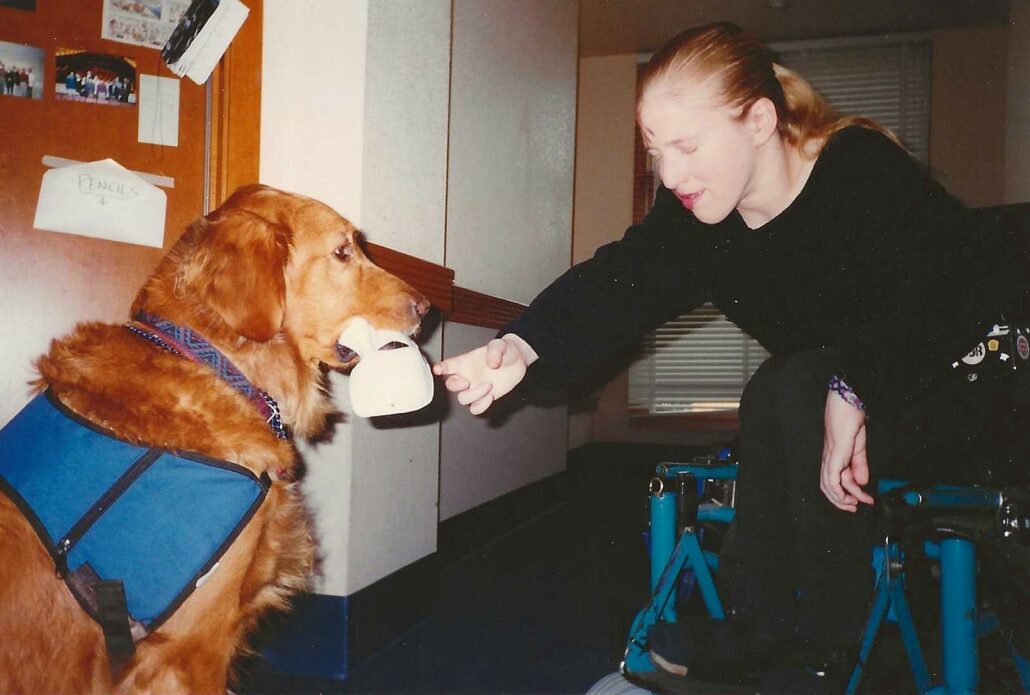
Karin and Merlin re-enacting a scene from The Phantom of the Opera, circa 1996.
—
“You’re good. You’re very good. But what would we do with your wheelchair? It would be in the way.”
Those were the terrible, fateful words of my high school drama teacher when he told me why I hadn’t been cast in a lead role in the spring musical. His words tore me apart inside and shattered my self-esteem. But what he didn’t know, what he never could have known, was how his words would propel me on a journey to mend my broken soul that took me to the height of joys and depths of despair and back again, all inextricably intertwined with the Phantom of the Opera.
Growing up, I had my own Phantom in the cellar — not a disfigured, tormented composer but my cheerful, partially blind grandfather who lived with us. He was a dapper gentleman who loved classical music, cooked delicious European cuisine, traveled around the world well into his 80s, and always wore a beret tilted just right atop his balding head. Beautiful melodies would waft up the stairs from his room in the basement, and sometimes I would hear the booming tones of a pipe organ playing a set of dramatic, unmistakable chords. Dunnnnn. Dun dun dun dun dunnnnnn.
I inherited my love of musicals from my grandfather and my mother. We went to lots of shows at the local dinner theatre, and I’d watch movie musicals over and over again. As a child with cerebral palsy whose well-meaning parents were obsessed with “fixing” me at all costs, I felt like my body was ugly and not good enough. I had to do physical therapy every day, and the only thing that got me through it was listening to musicals.
I was always different from my peers, and I never fit in. My middle school years were especially hellish; I went to a private school for a couple of years and was severely bullied. But when we moved from Kentucky to a small town in Indiana, things got a bit better. I managed to make a few friends, and one of my best friends in high school, Erika, showed up after spring break with an amazing book filled with pictures of beautiful costumes and a man in a mask. She had visited Los Angeles and was excited to tell me all about seeing The Phantom of the Opera with Michael Crawford (yes, I’m still jealous). She had no way of knowing what she was starting in that moment.
Fascinated, I checked out a copy of that book (The Complete Phantom of the Opera) from the library, and later the Gaston Leroux novel. I was reading Phantom by Susan Kay when my first service dog, Kennedy, died suddenly from a tumor in his heart on Christmas Day 1992.
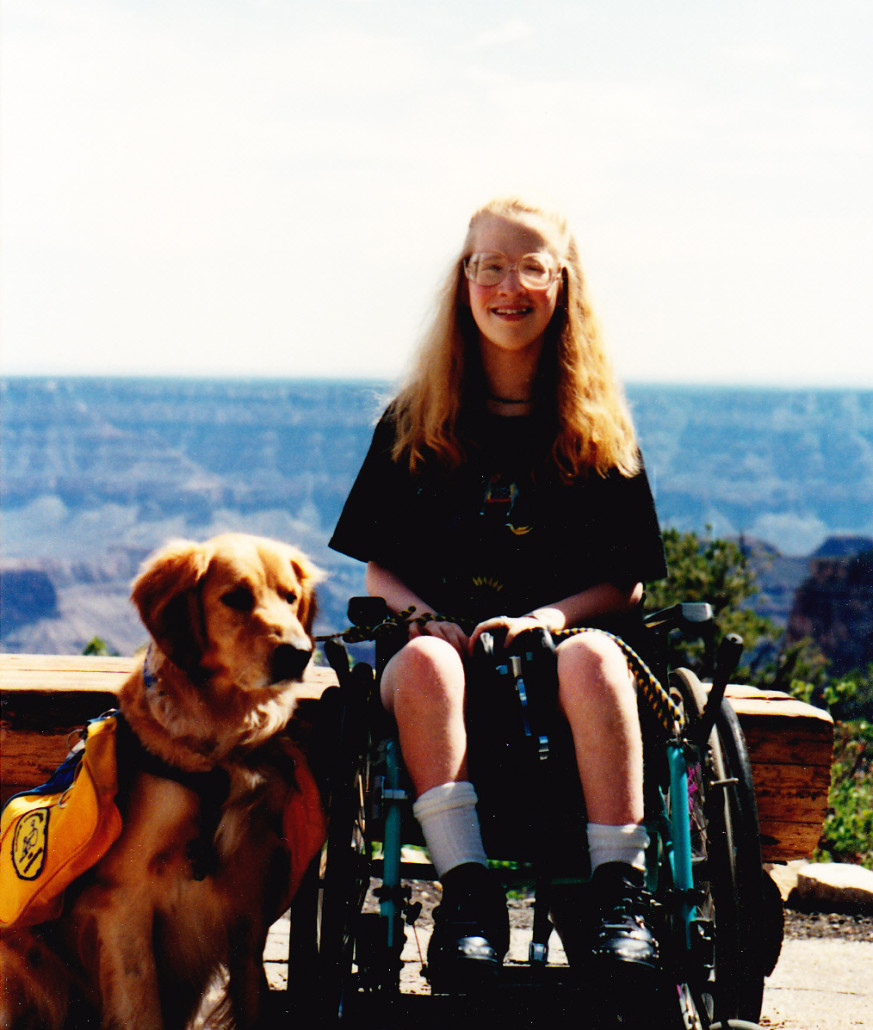
Karin and Kennedy at the Grand Canyon, 1991
I sank into a depression, and the Phantom was my companion. I could relate to him, this man who was rejected over and over because of how he looked, who yearned to be loved but was forever alone. Still, I kept telling myself, the world is different now. Things will be better for me than for the Phantom in 1880s France. And then there was the audition.
I can’t sing well now, but I could back then, between practice and better posture and lung capacity. But it didn’t even matter. The drama teachers admitted they discriminated against me, that I’d have received a major role if I wasn’t in a wheelchair, but even my own parents didn’t fight for me because they didn’t understand the lifelong impact that single incident would have on my life. When you have a disability (or your child does) ableism is so rampant that sometimes you have to pick your battles. Almost 30 years later, I have failed myself enough times in similar situations that I can forgive them — and myself — but back then, I was a teenage girl left feeling broken and worthless.
That was the moment I realized I would never have a chance in theatre. If I couldn’t be included in a high school production, my disability would bar me from ever doing any level of professional theatre, or amateur for that matter, unless perhaps it was a cast of all disabled people. I could never be good enough. And so I let go of that dream, and I replaced it with a cloud of deep sadness that followed me to Stanford University, where my bright future was supposed to begin. I covered it well, but I was struggling.
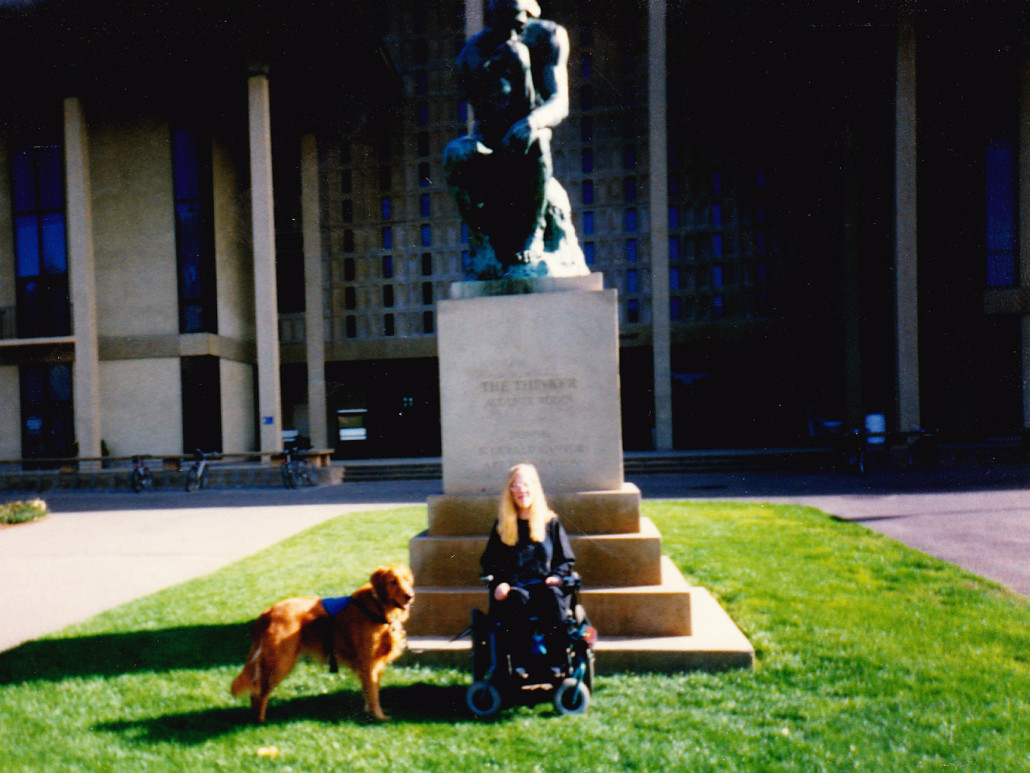
At Stanford University, age 18
I dove even further into my love of the Phantom of the Opera, reading any books with the characters, listening to other musical versions, anything I could get my hands on. And in 1995, at the dawn of the Internet, I found a way to connect with others who would understand: a newsgroup.
For all the youngsters reading this, there was a time before Facebook, even before Tumblr and Reddit and Internet discussion boards. The World Wide Web was slow and full of animated GIFs of dancing hamsters and under construction signs. And one of the best ways to discuss a topic of interest was on a newsgroup. A newsgroup was kind of like a forum, but you would access it using newsgroup software or have the messages delivered to your email address. The group I joined was called rec.arts.theatre.musicals.
![]()
![]()
![]()
I just read messages for the first few days, looking for anyone who might love Phantom as much as I did. It didn’t take long to find someone: a woman calling herself Christine Daae, which turned out to be her real name. I was in awe of her knowledge and deep insights when it came to Erik the Phantom, and eventually I worked up the courage to email her. Christine, it turned out, was close to my age and we had many things in common. Suddenly, I had a best friend who lived halfway across the world. We decided that we had to find a better way to connect people who loved Phantom specifically. That’s how I became the founder of the very first email discussion group for The Phantom of the Opera.
Again, listen closely, kids: an email list was similar to a list you might subscribe to now, except any member could send a message to it, and any member could reply and their message would go out to the entire group. And yes, it got frustrating when one person would reply, quoting all the previous responses, only to say “I agree” or “That’s awesome.” We had a team of Managers dedicated to keeping things running smoothly, and the Punjab Lasso would toss miscreants out of the group.
I also created one of the first Phantom informational websites — The Really Useful Group didn’t even have one yet. There were no page builders; I had to write the HTML myself. I would not be where I am today career-wise if I hadn’t been inspired to learn these skills in the early days of the Internet.
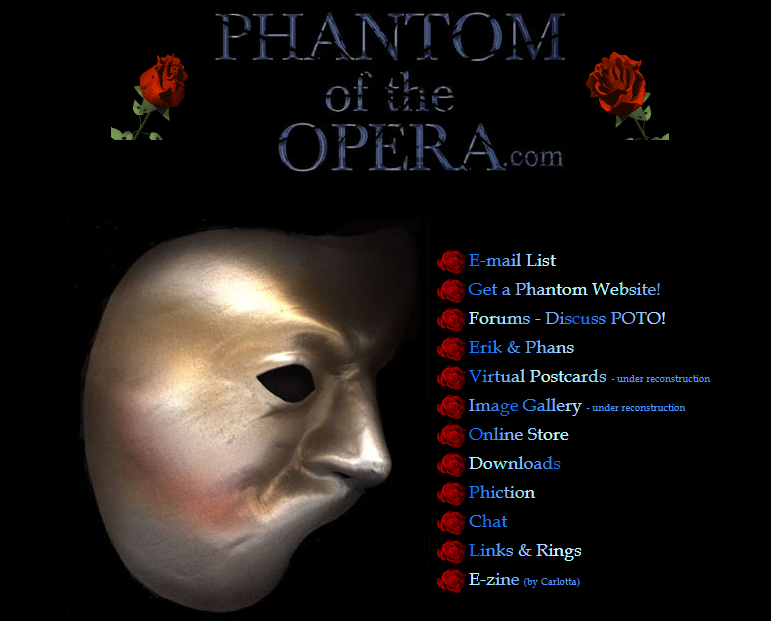
One of the various iterations of my Phantom website from the late 1990s. Thanks, Internet Wayback Machine!
Eventually, some of us from the group decided to start the IRC channel #phantom, a chat room that looked a lot like Discord or Slack. There were romances, breakups, and epic dramas, and a surprisingly large contingent of members from Ohio. (Or perhaps not surprising; what else is there to do in Ohio?) Phantom itself was almost never the topic of conversation, which became a running joke and confused would-be new members who showed up hoping for detailed discussions of a favorite character or key plot point. Most of all, we formed friendships that endure to this day. Our group of mostly high school and college kids, with a few older folks mixed in, became professors, lawyers, writers, and even a Broadway performer, and I believe that chat channel shaped us in many ways. We found a place where we belonged and people who understood us.
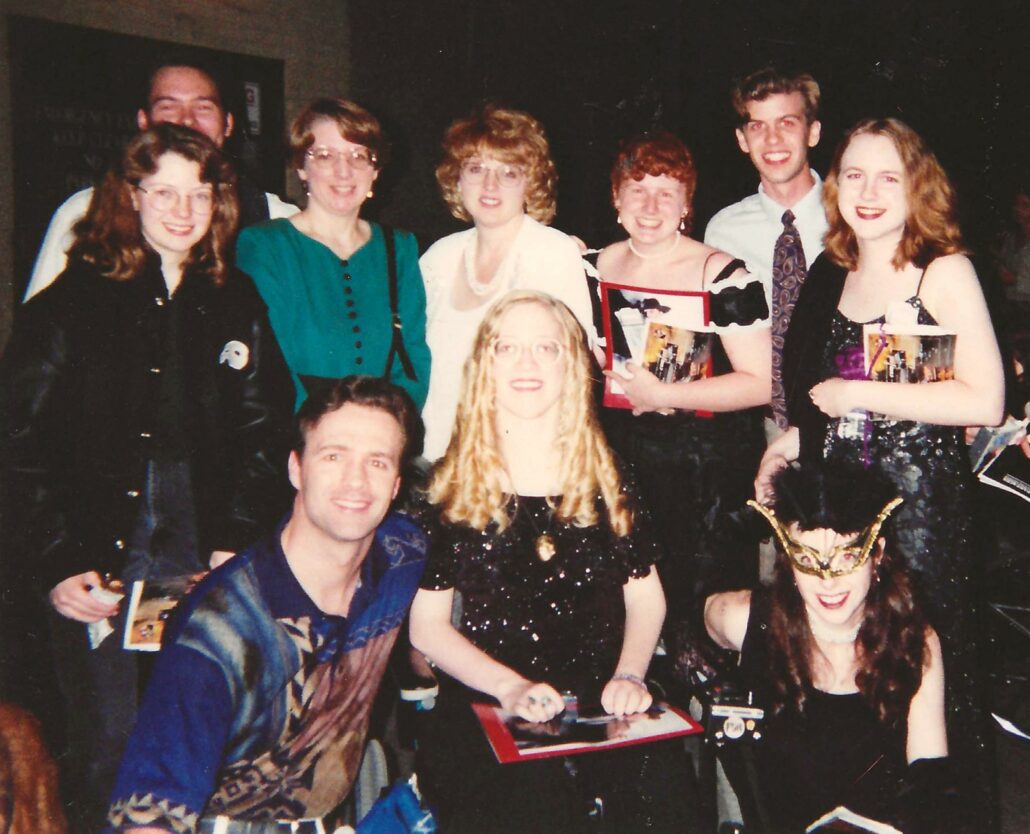
Phans from the email list and IRC channel gathering in Toronto, 1996. Toronto Phantom Ciaran Sheehan is sitting beside me.
In 1996, a group of us from the email list and chat room decided to meet in person at the 7th anniversary of the Phantom production in Toronto. We saw the show a few times, and the Phantom at the time, Ciaran Sheehan, stopped by our hotel afterward and gave an impromptu performance of Empty Chairs at Empty Tables from Les Miserables.
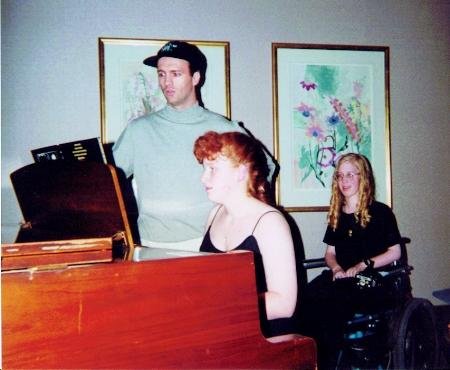
Ciaran Sheehan with Carrie and me, 1996
It’s a surreal experience to meet your best friends in person for the first time after knowing each other for a year, but it taught me that online communities have the power to truly connect us, a lesson that has shaped my life and career.
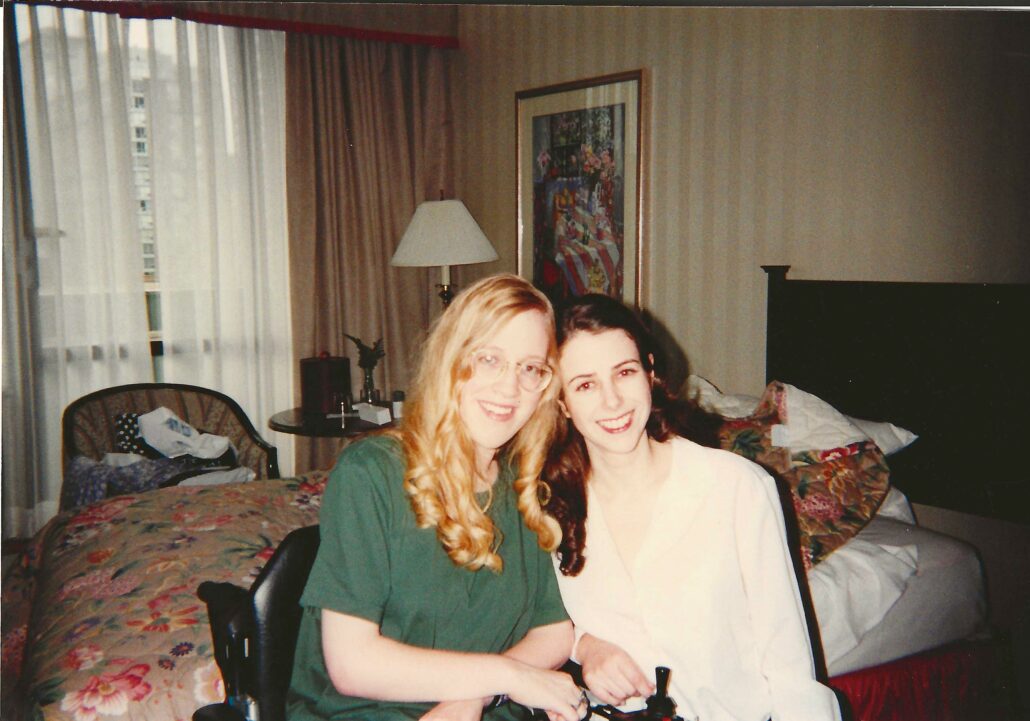
Karin and Christine in Toronto, 1996.
I loved visiting Toronto, but my “home” production of Phantom was the one that ran continuously in San Francisco from 1993 to 1999. Back then, the upper levels of the Curran Theatre were not wheelchair accessible, so they had to sell the wheelchair seats in the orchestra section for the same price as the cheapest ticket in the house. That meant I was able to see the show for $25 on Friday or Saturday nights, and just $15 for weekdays and matinees. For the price of a movie ticket, I could see this beautiful piece of live theatre again and again. And I did.
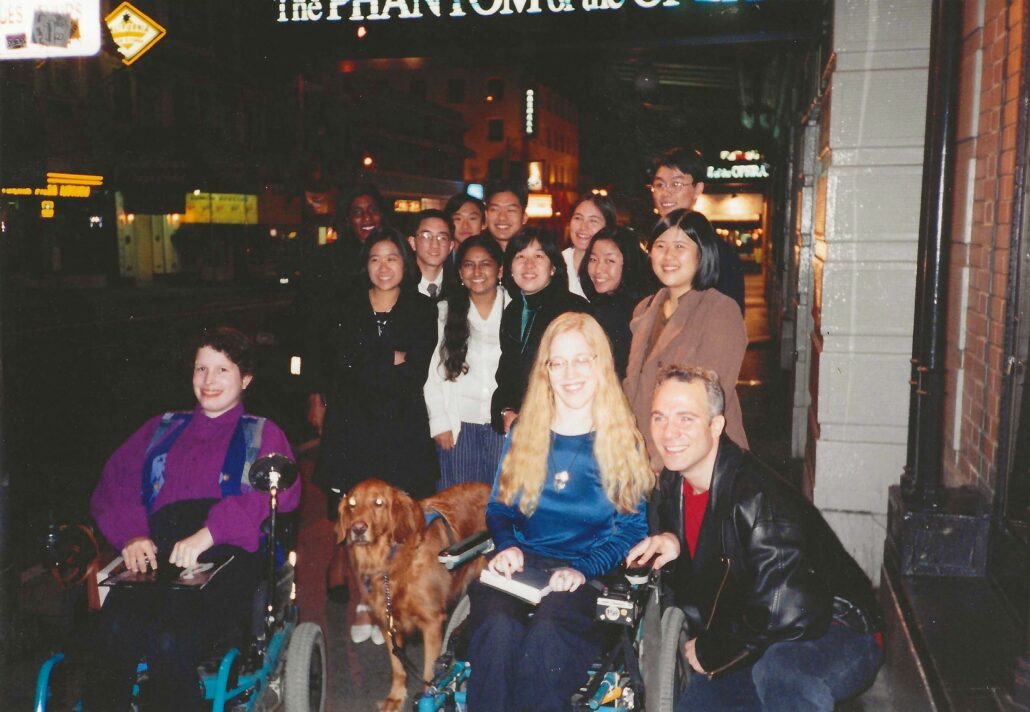
San Francisco Phantom Franc D’Ambrosio with me, Miriam, and some other friends from college.
Throughout most of college, I saw Phantom approximately once a month, usually attending Sunday matinees so I could get home early enough to sleep well and make it to class the next morning. I’d also attend other concerts the cast put on, such as holiday shows and cabarets. For most of the run, the three leads were Franc D’Ambrosio as the Phantom, Lisa Vroman as Christine, and Christopher Carl as Raoul — all wonderful people who were extremely kind to me and others who frequented the show.
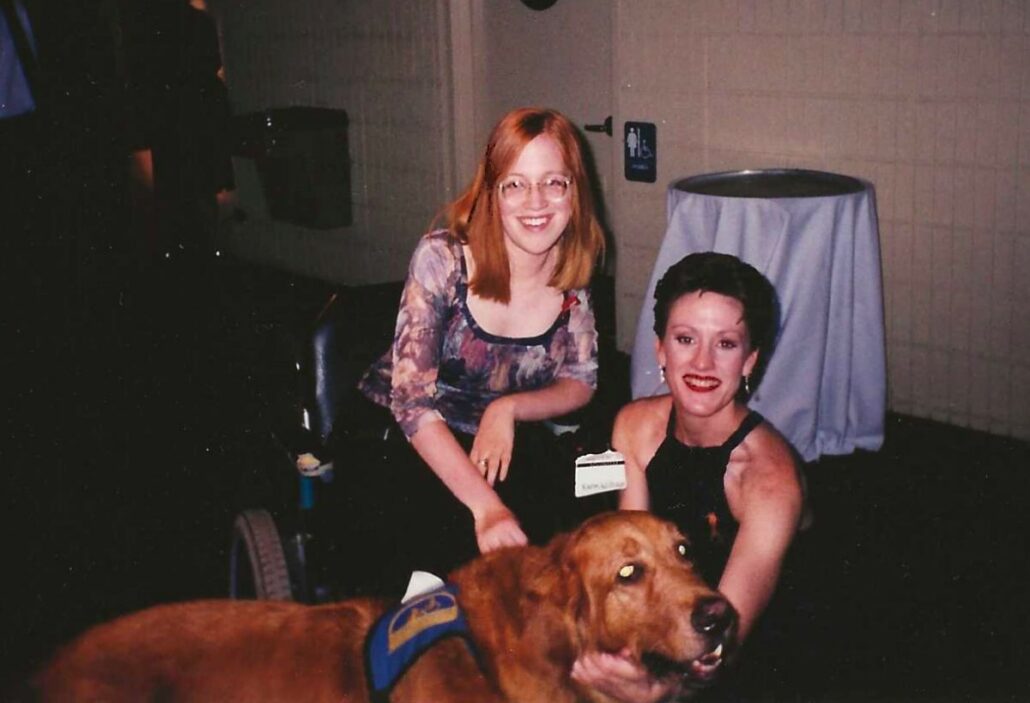
Merlin getting some cuddles from San Francisco Christine Lisa Vroman.
I wasn’t alone at these performances. I was always accompanied by my faithful service dog, a big red golden retriever named Merlin. He was so calm and even-tempered that he barely even noticed the various explosions during the show and eventually slept through the whole thing. But he did learn the final chords and would stand up just as Meg was showing the Phantom’s mask to the audience. He knew it was time to give his standing ovation and then head out to the stage door where he’d receive many hugs from the cast.
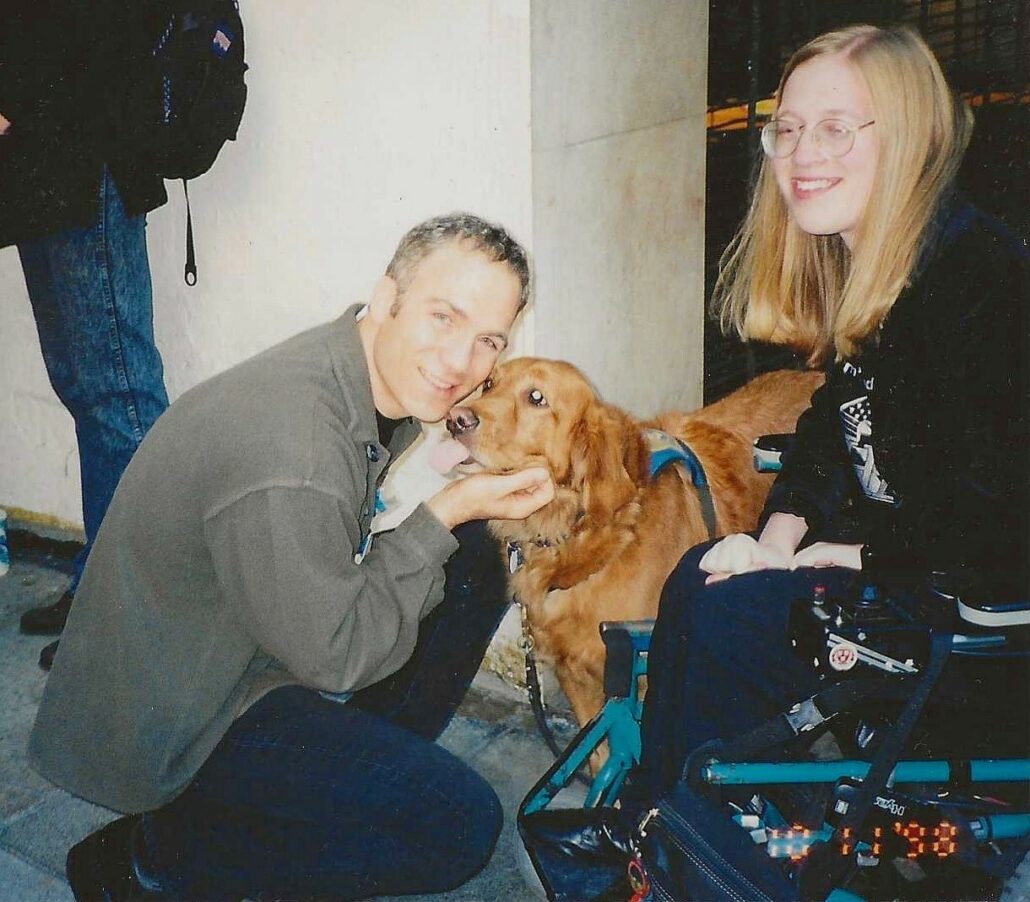
Franc D’Ambrosio with Merlin and Karin, 1998.
I am sure that many people in the cast wondered why people like me came to the show over and over again. Every show has its fans, but we weren’t there for the costumes and the spectacle. In my experience, many of us who are drawn to Phantom have faced rejection and prejudice and feel a connection with the character. Many of us have physical disabilities or are neurodivergent, and quite a few of us are part of the LGBTQ+ community. The OG phans I know are loving and caring people who have gone on to careers where we try to make the world a better place for those who are different.

Karin and Franc D’Ambrosio
Were there a few crazies? Sure. A good friend once went to a woman’s home to buy a collectible and discovered she had a room that was covered in identical framed posters of Michael Crawford, all signed from different tour dates. And on the Phantom email list, we would sometimes have to rein in people who were taking things way too seriously. But Phantom phans as a group are good people you’d want to have in your corner. Even if some of us made questionable fashion choices in the 1990s.
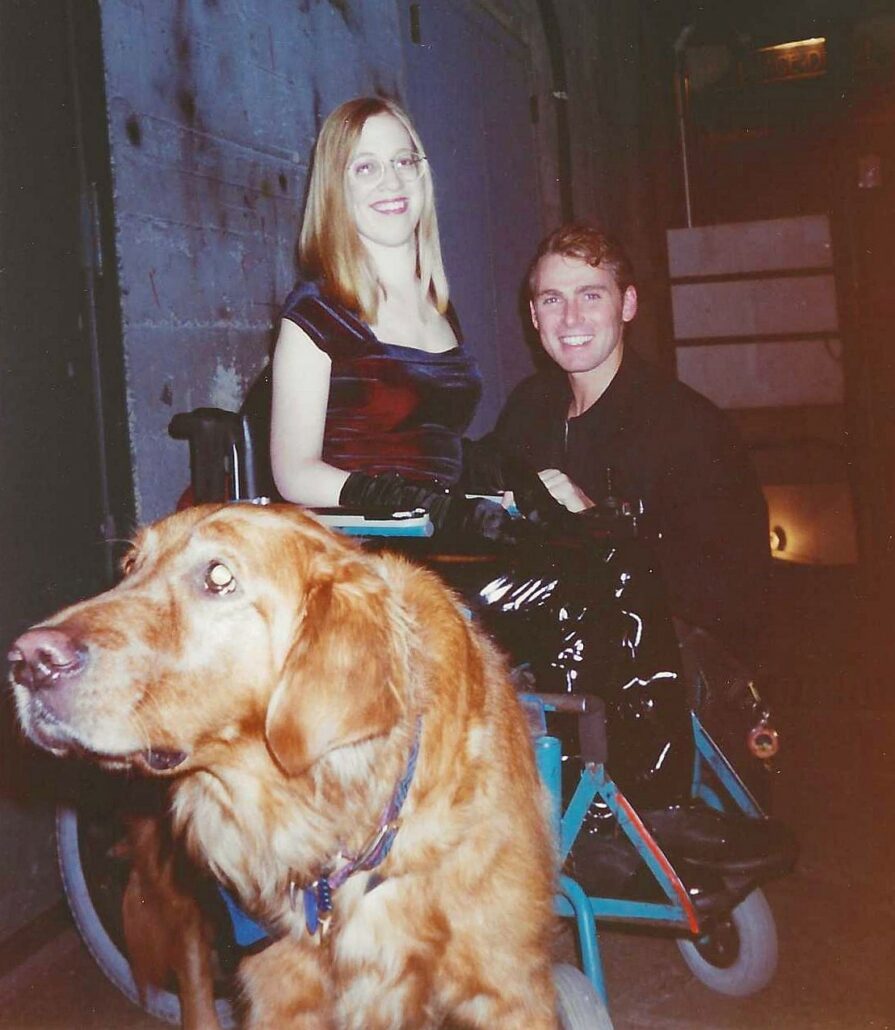
Merlin, Karin, San Francisco Raoul Christopher Carl, and a pair of vinyl pants I thought were fabulous in 1997.
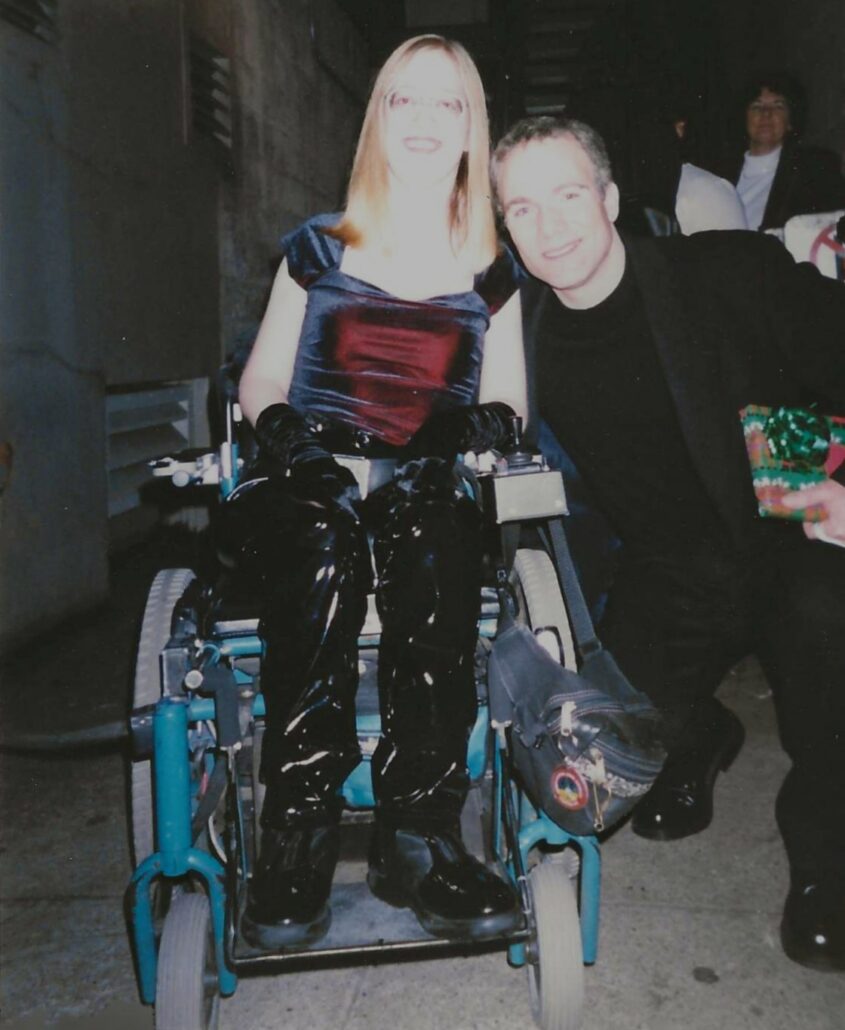
Again with the pants. I only wish I could still fit into them!
People who see Phantom (or any show) dozens of times aren’t much different from those who go to Comic-Con every year or can tell you everything you never wanted to know about their favorite movie. We humans are constantly searching for meaning in life, and sometimes we find it in unexpected places.
The San Francisco production of Phantom closed on January 3, 1999. I wasn’t there; I was spending the holidays with my family at a hotel in Texas, where my mother was undergoing cancer treatment. They said she was in remission, but I was worried. She downplayed it all and was excited about my upcoming college graduation and move to Los Angeles. I would be in the same city as my friend Christine, who by then had moved to the US and married Paul, an actor, artist, and fellow phan.
By the time I graduated in the spring, my mom was very sick. She kept insisting she was going to get better, and encouraging me to move to LA rather than come home. I know that’s what she wanted me to do, but I wish I hadn’t listened to her. She passed away a few months later, on September 21, 1999. (You can read my tribute to my mom here.)

My Mom, Kristin Willison
I struggled to build a new life without my mother there to support and encourage me; we had always been very close. Eventually, I went to counseling and found ways to heal. I came out as a lesbian, earned a Master’s degree in psychology, and moved forward in my life. I lived just down the street from Christine and Paul; we ran a t-shirt business for a few years and saw each other almost every day. We sold our shirts at Pride festivals and protested the war in Iraq. I started listening to lots of singer-songwriters and attended concerts big and small around LA. I learned to train my own service dogs and did some animal rescue.
Aside from the occasional fond glance at the collection of memorabilia in my display case, I rarely thought about Phantom. I didn’t even see the show for over 10 years. But the skills I’d learned building those early Phantom websites and online communities directly led to my career as an editor, writer, and entrepreneur in the entertainment and health industries.
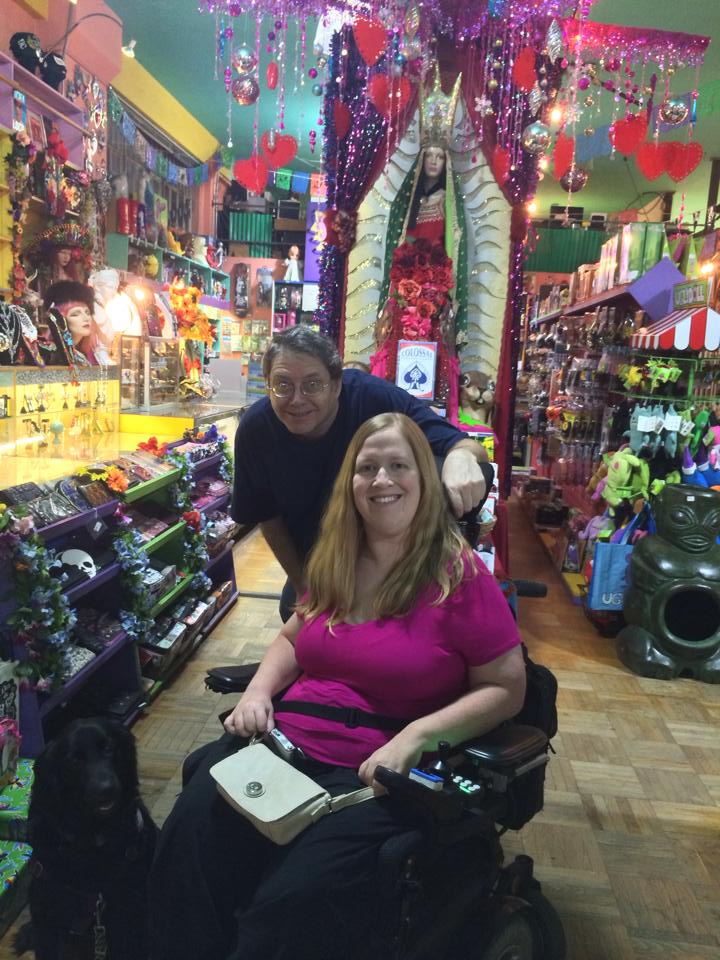
Karin and Paul at Soap Plant, the wackiest store on Earth
So much has happened since then, more than I can cover in this post without turning it into my whole life story. But eventually, as these things often do, it all came full circle.
In 2009, my once-promising life was going nowhere, and I had become a shadow of myself. I was in a relationship with a woman who was gradually revealing herself to be an abuser and manipulator. We had moved to San Diego and I felt distant from my family and friends, literally and figuratively.
My then-partner liked musicals too, but she hadn’t seen Phantom, so we went together… And she didn’t get it. She couldn’t see the Phantom as anything other than evil or understand why I related to the character. To be fair, his behavior doesn’t hold up well in our more evolved times, but I can understand how he ended up the way he was and feel empathy for him. She couldn’t. It was a tiny thing but it represented a fundamental disconnect between us. That was the beginning of the veil slowly being lifted from my eyes.
Around the same time, another initially small but ultimately life-changing thing happened: I made a new friend. Due to my then-partner’s behavior, I rarely left the house and had become extremely lonely. Looking for a way to connect with others, I joined a virtual reality community called Second Life. Some friends joined me, including Paul and Christine, who were no longer together by then but remained friends.
I was miserable in real life, but in Second Life, I built a virtual land rental business and a popular live music venue. As I was looking for new acts to book, a few people told me that an actress who had played Christine in The Phantom of the Opera did concerts on Second Life. A quick Google search led me to a blog post and her name, Tamra Hayden. I had never seen her perform, but recognized her name and remembered she had played Christine during those golden years when I was a phan.
To make an already long story less long, I started assisting with Tamra’s virtual concerts and we eventually became good friends. The live music community in Second Life helped me reconnect with my lost self, and with the support of friends new and old, I was able to free myself from the abusive relationship. (You can read my survival story here if you wish.)
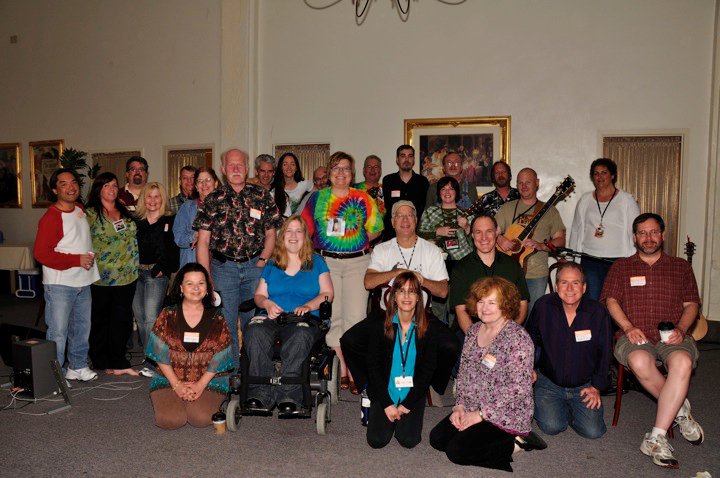
The Hartford Second Life Music Jam, 2010
As part of my healing process, I started taking road trips across the country, where I met Tamra and other online friends in person. I finally visited New York City and saw my first show on Broadway. (No, it wasn’t Phantom, but it was The Addams Family, who would surely adopt him as one of their own.)
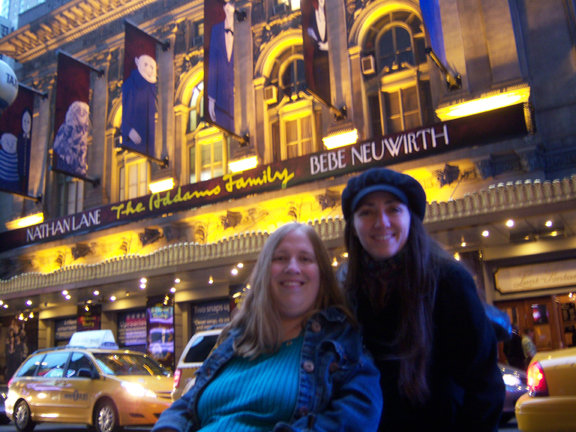
Tamra and Karin outside The Addams Family, 2010.
I was able to attend the Music Box Tour closing show in Los Angeles on October 31, 2010, where I reconnected with cast members I hadn’t seen in more than 10 years.
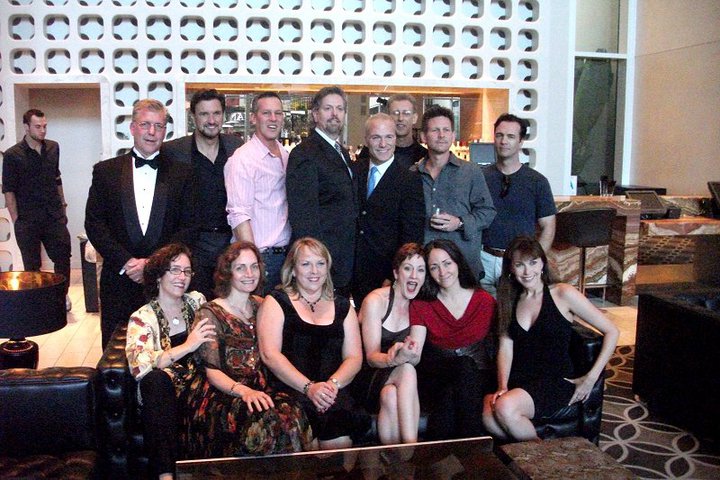
The Music Box Tour closing party, 2010.
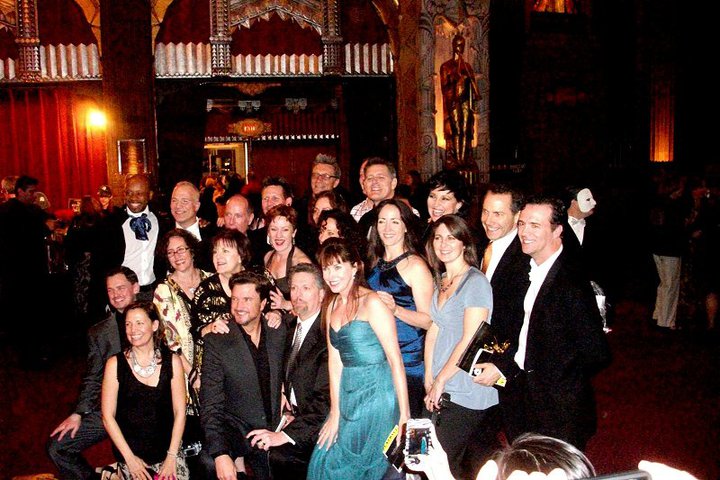
Phantom Music Box Tour closing party, 2010
My life’s second act has been full of singing and dancing, but at times it’s been more Boublil and Schonberg than Lerner and Loewe. On the day after Thanksgiving, 2014, I was the victim of a home invasion robbery in which I was held at gunpoint and thrown out of my wheelchair. That attack and the subsequent death threats I received forced me to leave California for my safety and move back to Indiana. The perpetrators, a personal care aide I had recently let go and her boyfriend, were eventually caught and are now in prison, but my life was forever changed. (You can read THAT survival story here. I’m sick of having to write survival stories… but given what I went through, they’re better than the alternative!)
I can’t say I love living in Indiana, but there are a few perks. I have a house in a quiet, safe neighborhood with a big yard for my four dogs. My town is home to Indiana University, which has one of the top music schools in the country, so our theatre is top-notch, and some major Broadway stars come here to do concerts and teach master classes. It’s also much closer to New York City — just over a day’s drive — so I was able to visit many times before the pandemic curtailed my travels. I won’t stay forever, but I’m making the best of it for now.
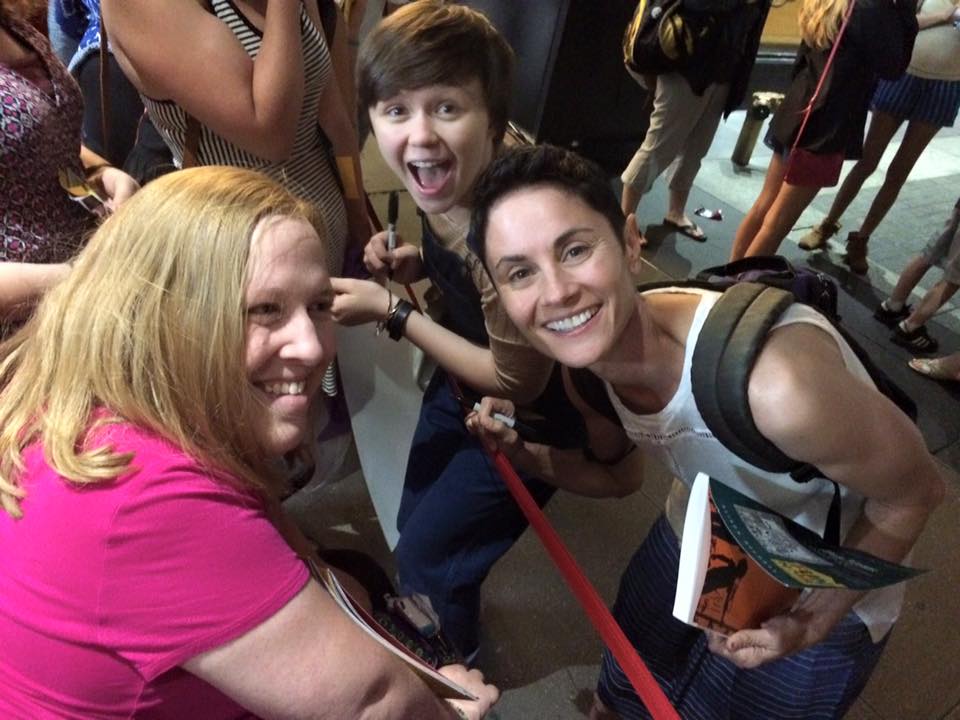
Me with 2 of the Alisons from Fun Home – Emily Skeggs and Beth Malone.
I’ve seen over 20 shows on Broadway so far — but only saw Phantom there once. My younger self who saw it 30+ times between 1993 and 1999 would be surprised, but there are so many new stories being told that better reflect who I am today. Theatre has become more inclusive, and I can see myself and people I care about in characters such as Elphaba in Wicked and Alison in Fun Home. These characters don’t hide away in a cellar; they fight for their voices to be heard.
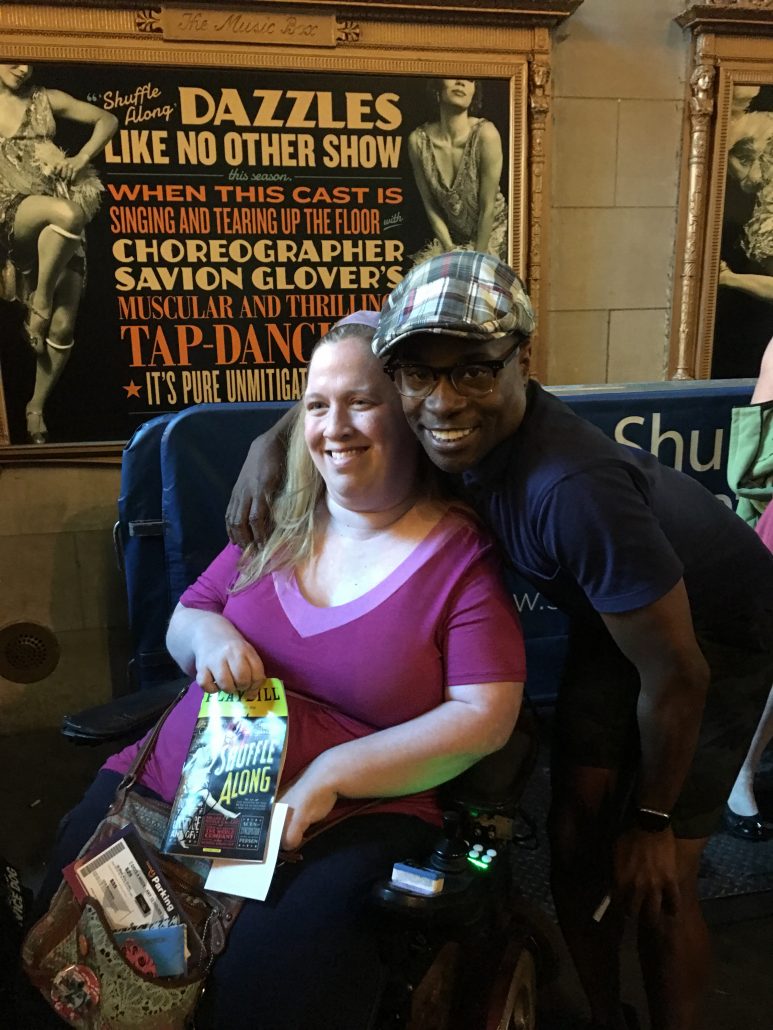
Meeting Billy Porter at the stage door after a performance of the musical “Shuffle Along.”
The most transformative experience I’ve had in the theatre was seeing Ali Stroker in her Tony-winning role as Ado Annie in Oklahoma. Her character wasn’t desperate to be loved and doomed to a tragic fate because of her appearance — she was confident, sexy, and wanted just the way she was. Her wheelchair wasn’t “in the way,” it was an integral part of her character and performance, easily accommodated by creative staging. (I wrote more about Ali’s Tony win here.)
I won’t pretend that Ali Stroker’s breakout performance has ended the systemic ableism in theatre — we all know it’s not that simple — but she healed the heart of that broken teenager still inside me as a middle-aged woman. It comforts me to know that now boys and girls with disabilities — like my friend’s teenage daughter who loves theatre as much as I did at her age — have a role model and someone they can point to if a teacher tells them that they don’t belong because they use a wheelchair or they’re blind or deaf or different in any way. I hope they won’t give up like I did, so they can tell new stories in the future — ones where the guy with the facial difference gets the girl (and ya know, doesn’t kill people in the process).
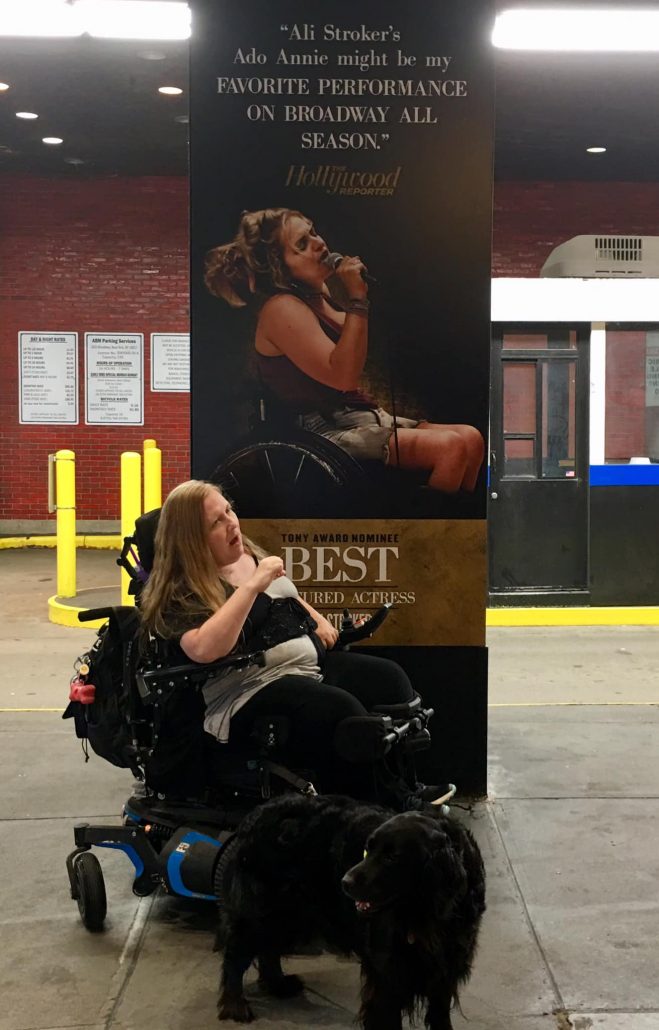
With a poster of Ali Stroker in “Oklahoma.” Ali is the first wheelchair user to win a Tony Award.
When I heard that Phantom would be closing, I didn’t feel the devastation such news would once have brought, only a quiet longing tinged with regret, like hearing a friend you lost touch with years ago is gone. I had taken for granted that Phantom would always be there if I felt drawn to it again, and it’s surreal to know that’s no longer true.
I wanted to be there for one of the final performances, but unfortunately, I was laid off from my job of over 6 years in September 2022, so it just wasn’t financially feasible to go to NYC. Instead, my au revoir to the show will be on April 21, when I’ll be seeing The Four Phantoms concert in Indianapolis, featuring two of my favorite actors from my years as a phan, Franc D’Ambrosio and Ciaran Sheehan.
I’m an “OG” old-school phan with different memories and cultural references and experiences. This article is going up a day late because I had to scan physical photos I dug out of a box. Many of my favorite actors were in the show before it was easy to slip high-quality cameras into theatres, and so their performances are preserved only as blurry “slime tutorials” on YouTube or lost entirely. It breaks my heart that younger theatre fans will never be able to see and hear them as I did. I hope future producers will see the value of professionally recording live shows with original and replacement casts so their history can be properly preserved and shared. But for now, it falls on people like me to be the keepers of these memories, and to honor those cast members by supporting their current work.
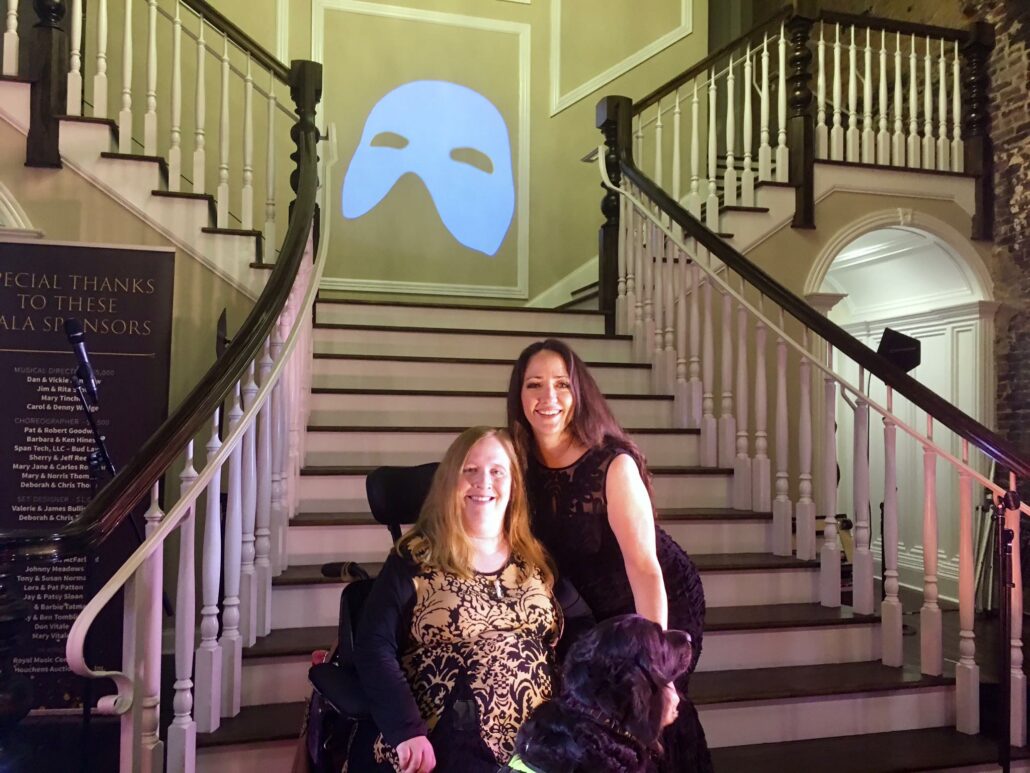
Aria the service dog, Karin, and Tamra after her concert with Craig Schulman, 2017.
Phantom itself isn’t a big part of my life anymore, nor the lives of my friends who spent their paychecks on it or got their paychecks from it — and that’s OK. We would never have met without the man in the mask weaving his tragic story into the melodies of our pasts, but now we are connected by so much more.
Rumors already abound that Phantom will return after the Majestic Theatre gets a much-needed renovation, probably with the scaled-down orchestra and staging currently used in London. It won’t be the same, but I hope some actors who grew up loving the show will become part of it and bring new life to the characters. I might go see it, or I might not. Phantom already gave me what I needed when I needed it. But I want the next generation, the kids who feel rejected and alone today, to have the opportunity to find themselves in the story. I want them to know that others before them understood exactly how they feel, and that it does get better, not in a Golden Age musical happily ever after way, but that you CAN have a fulfilling life (and be a performer, if that’s your dream) if you’re disabled or gay or different in any kind of way. Just… maybe consider your future self before you decide to wear shiny vinyl pants in every photo. Then rock them. Honestly, I have no regrets.
Theatre is a mirror that reflects the people and times in which it was created, but like the Phantom’s mirror, it is also a portal through which we can journey into a new world and become more than we imagined we could be. So wherever and however his story is told, the Phantom of the Opera will always be there, inside our minds.
